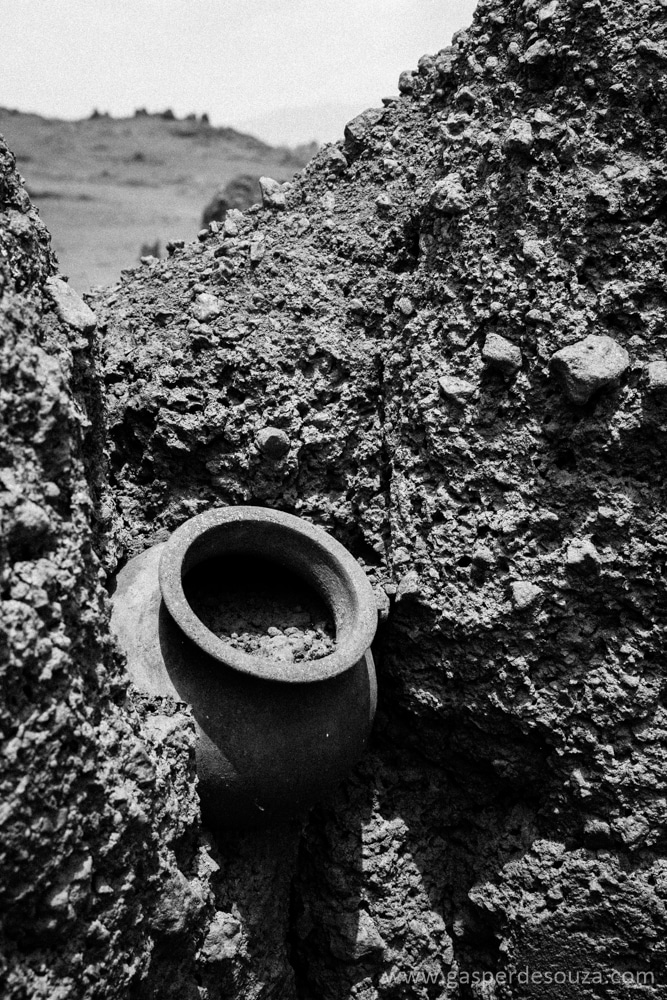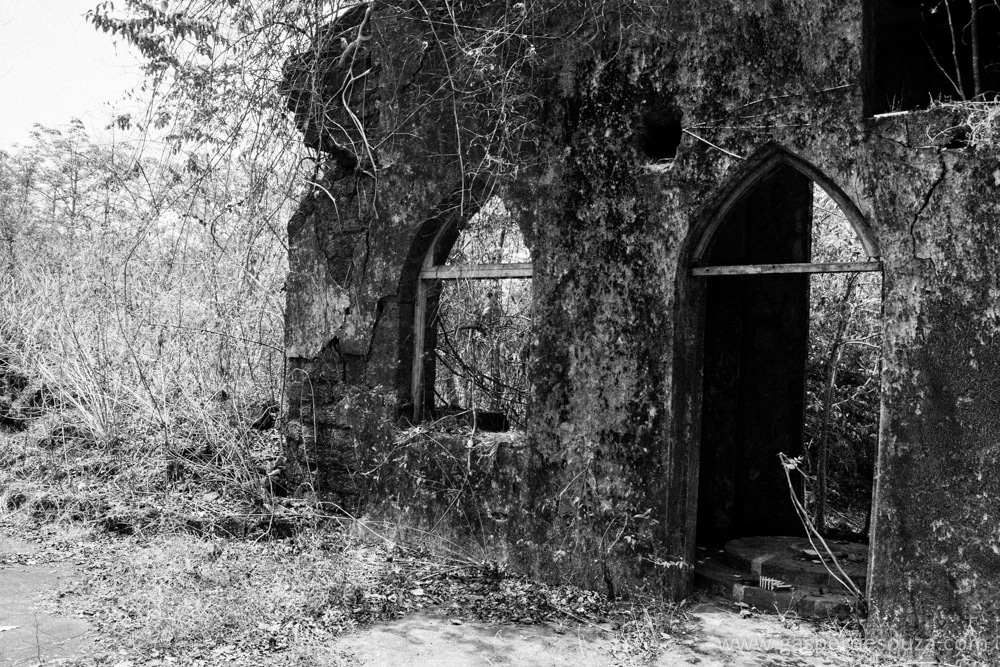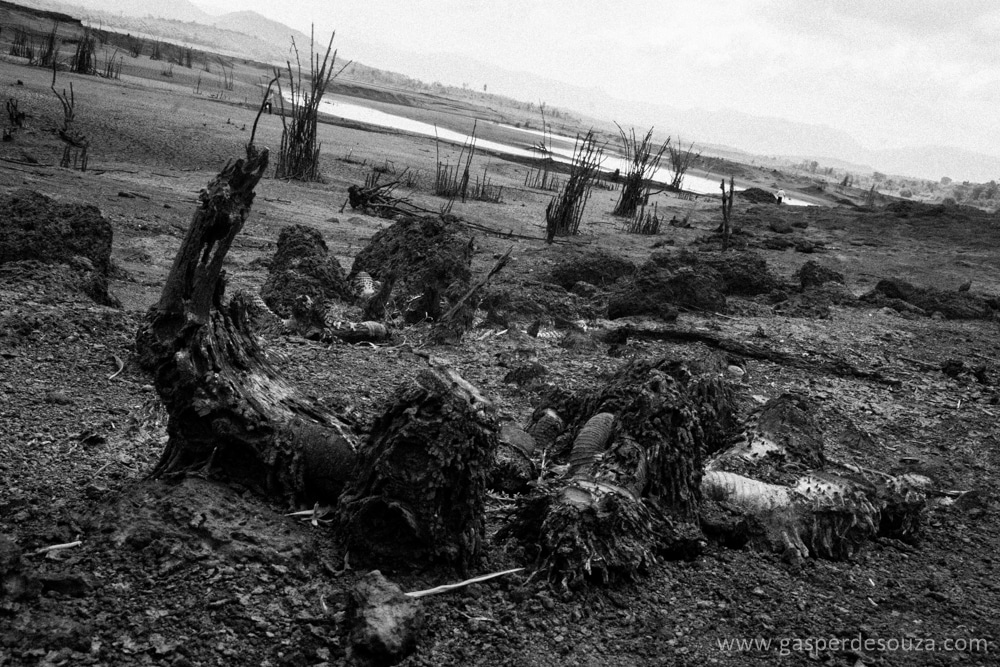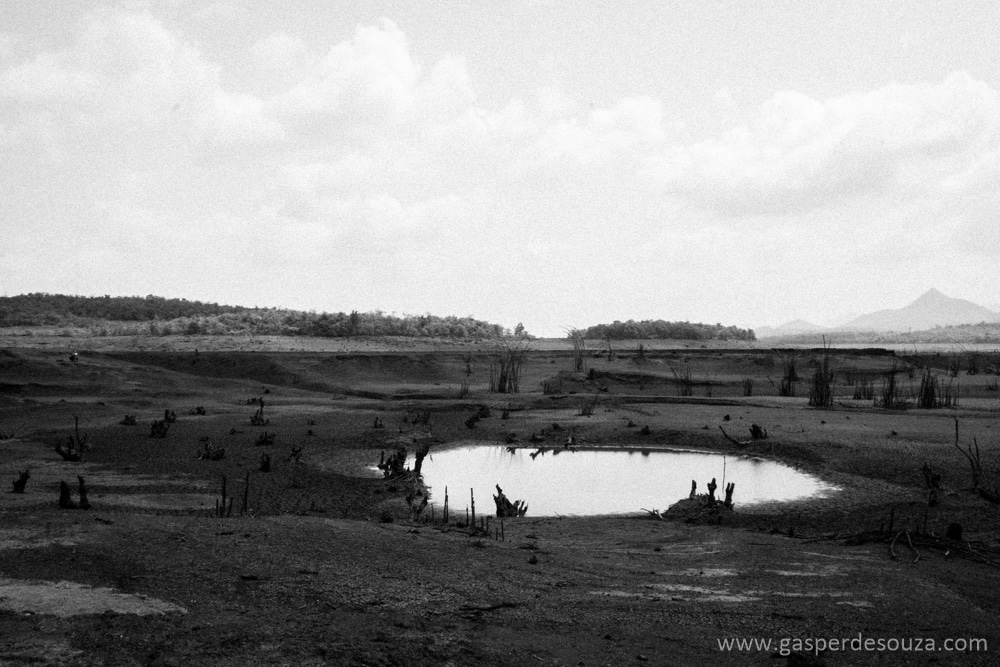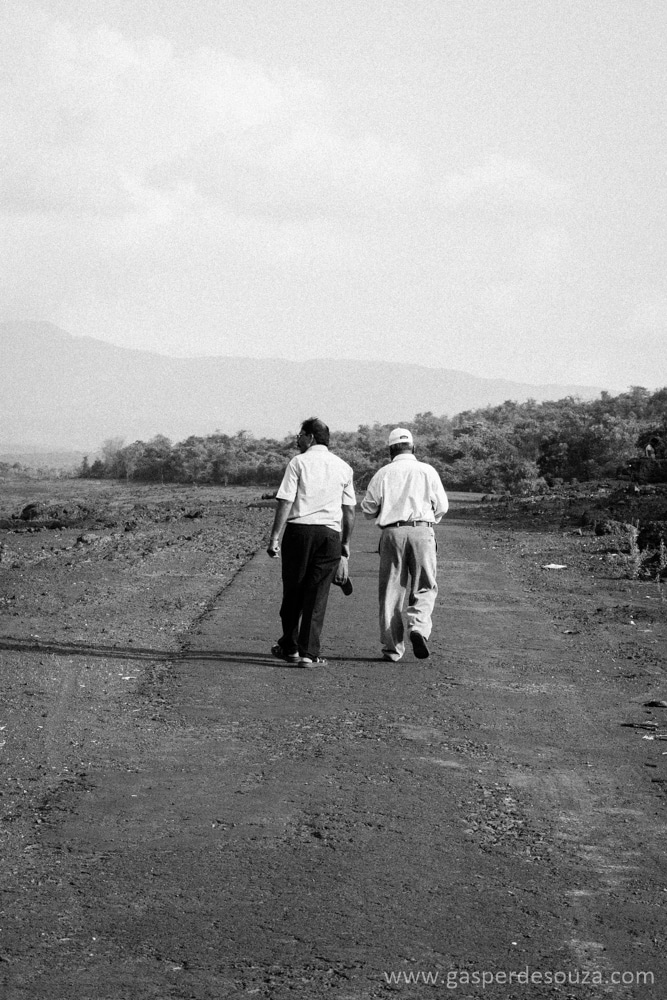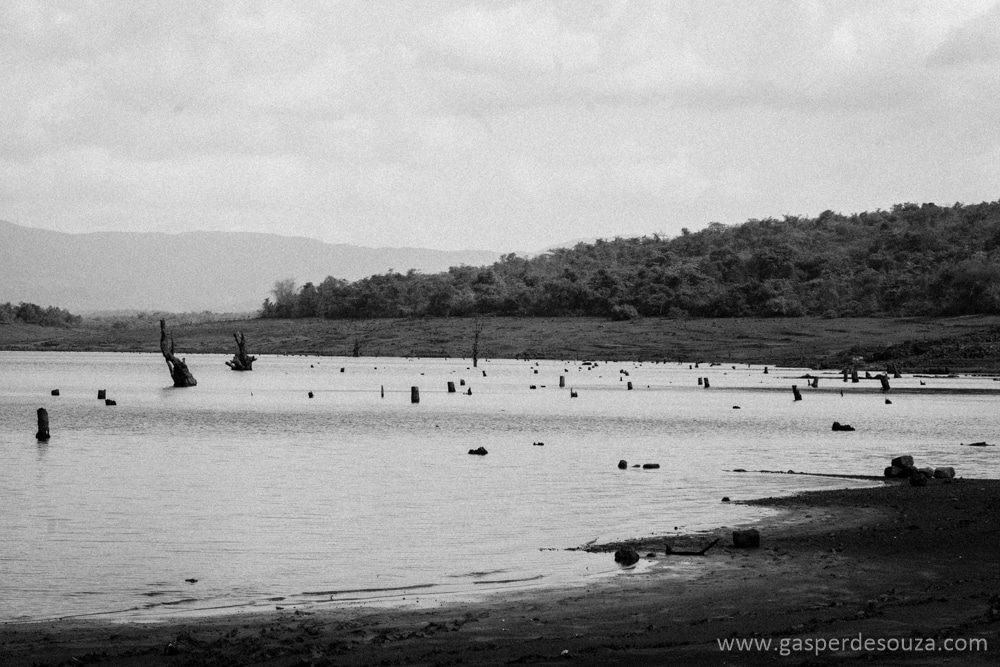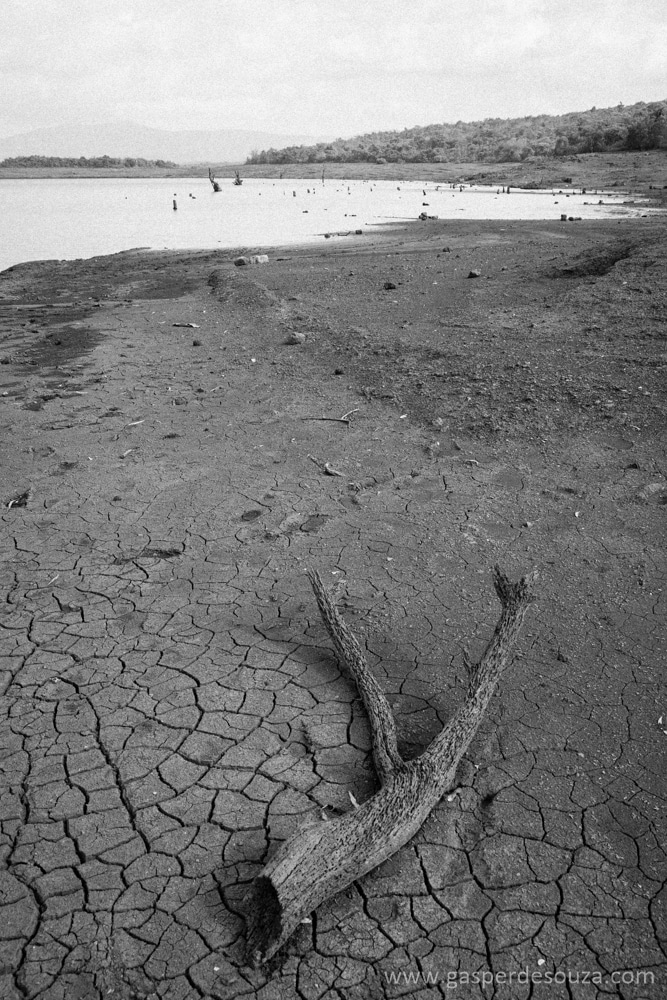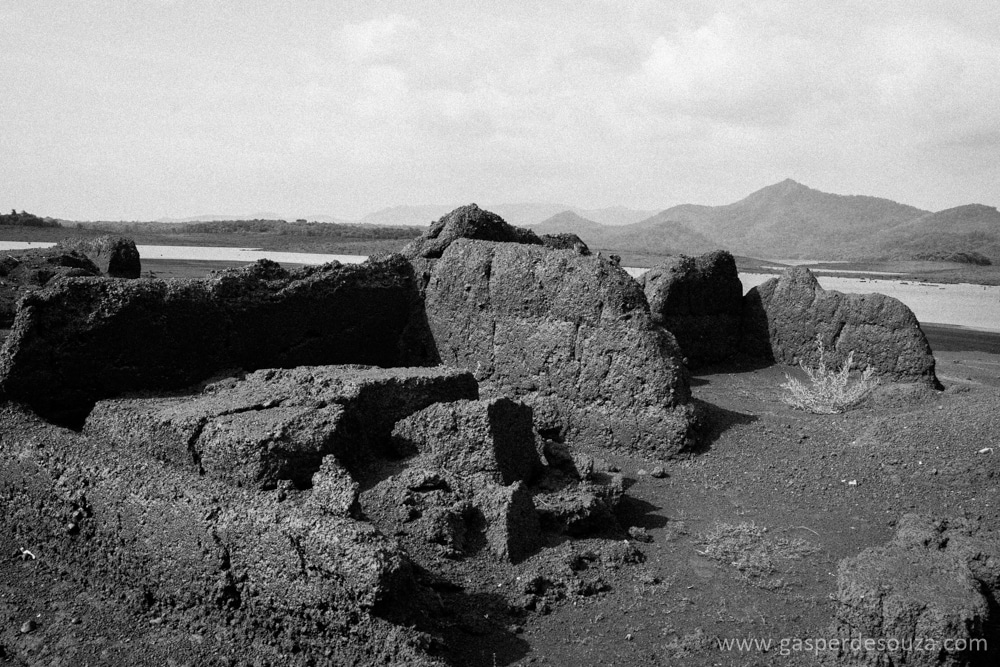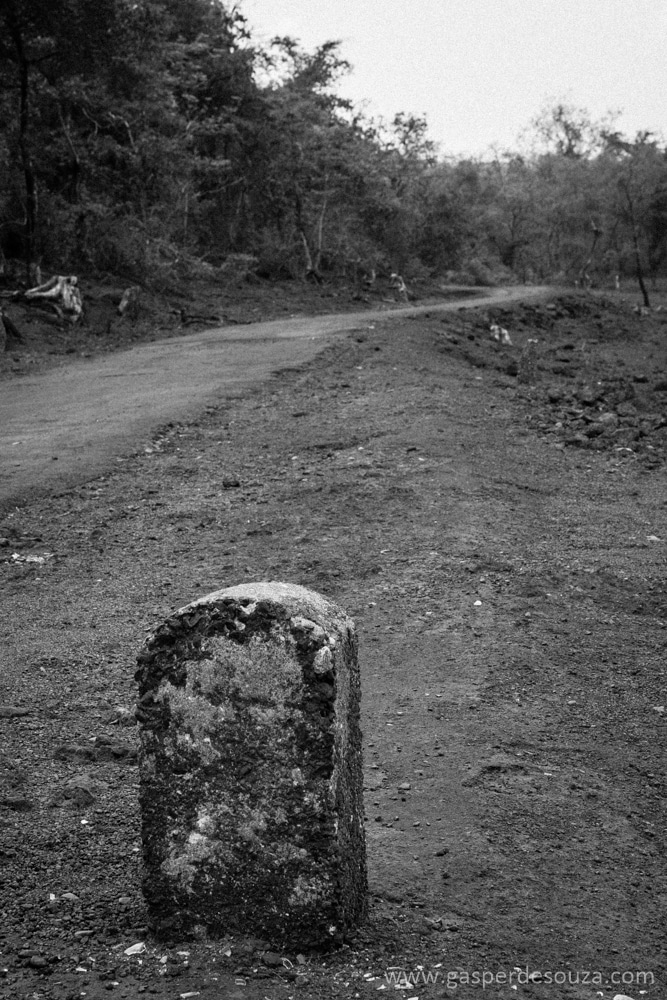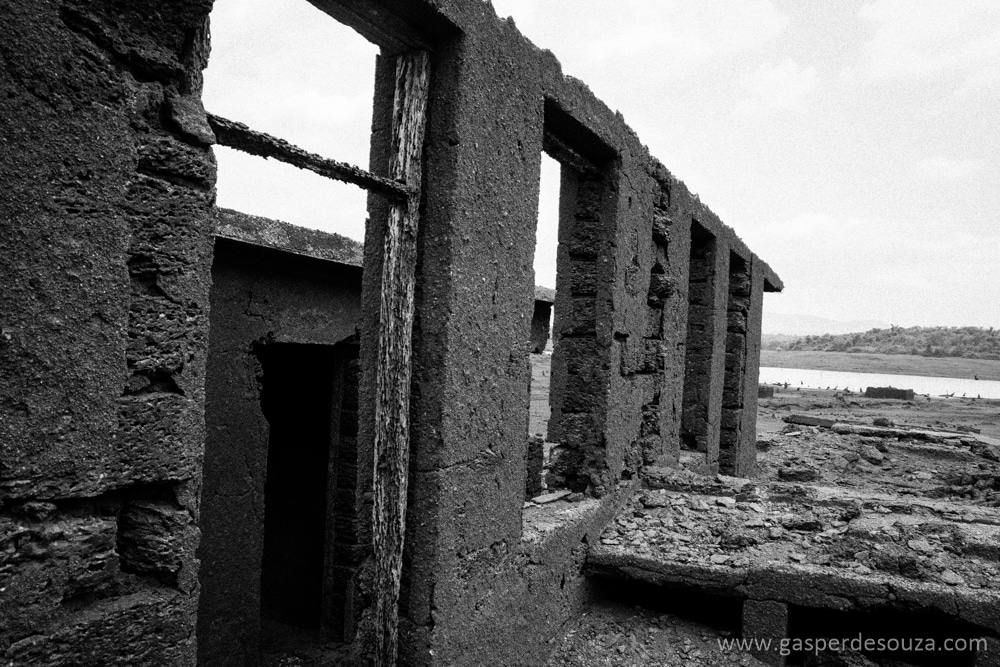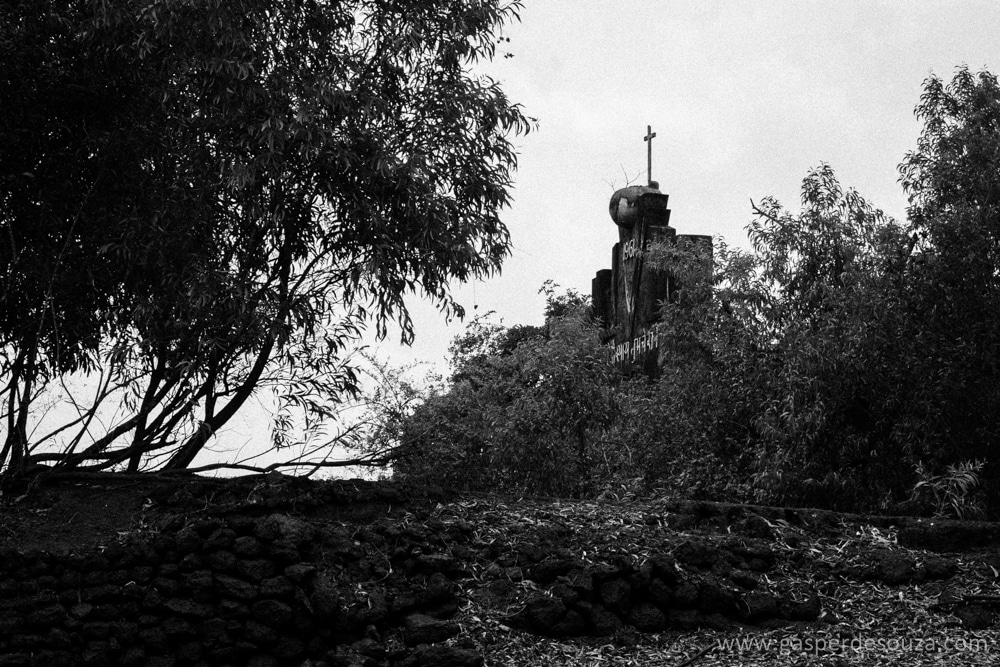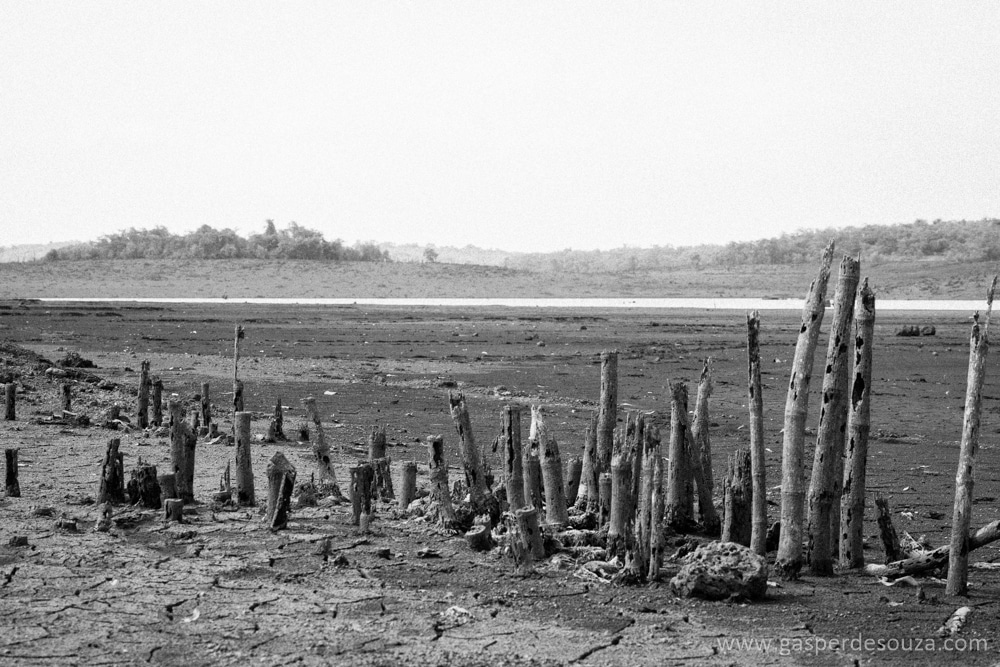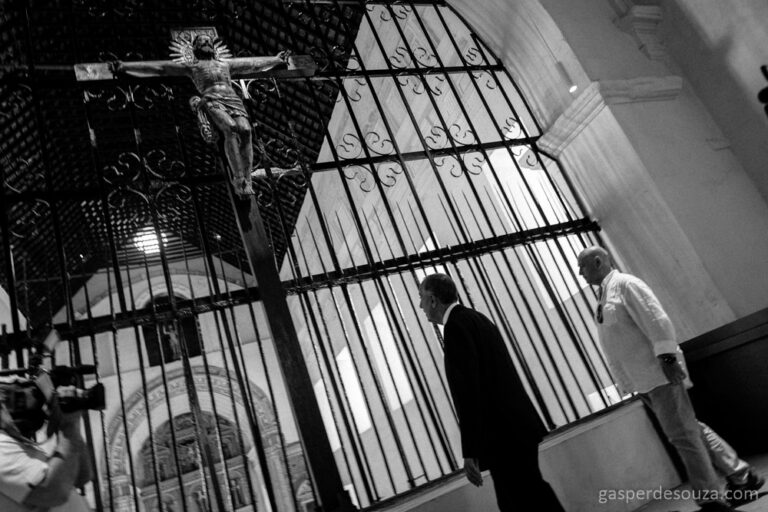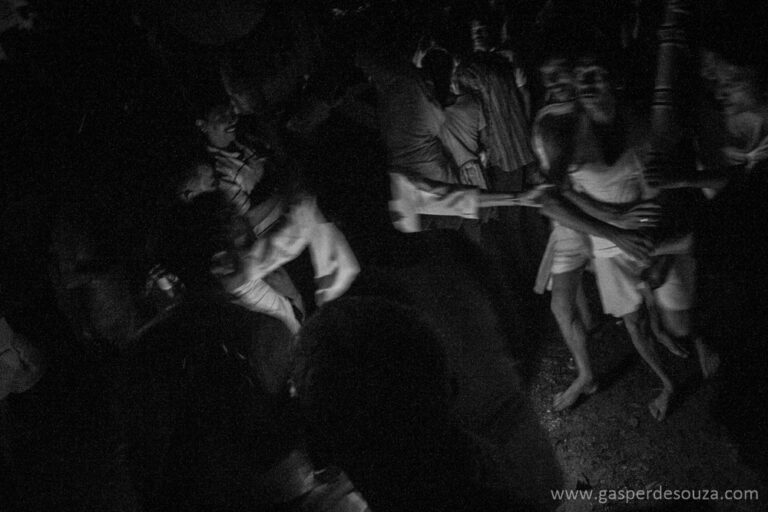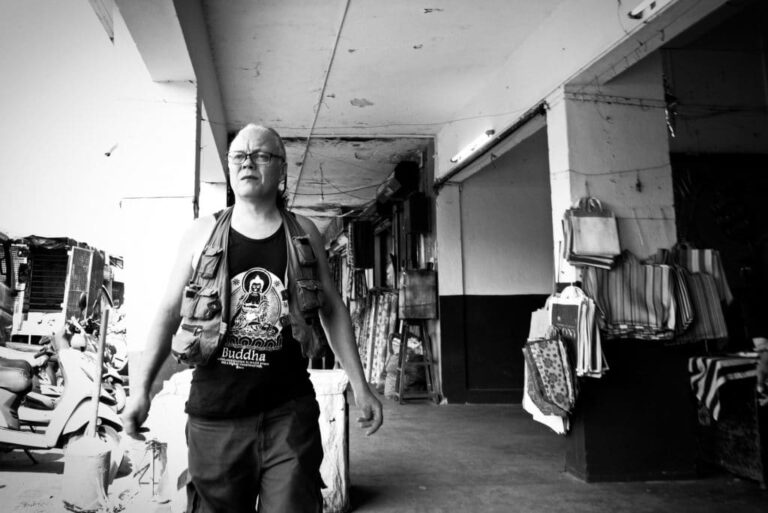Curdi used to be a little village in the Sanguem taluka, of South Goa. In the 1980s this village was submerged along with neighbouring areas when it became a part of the catchment area of the Selaulim Dam – a water project that supplies water to all of South Goa. The villagers were resettled in near by towns.
But every summer the area transforms into a surreal landscape as the waters in the catchment area recede to reveal stumps of trees long dead and broken mud and stone walls of the old village houses. This is when displaced villagers make their way to the site of their old homesteads for reasons of nostalgia – remembering the past. At one elevated region, the old Christian chapel stands defiantly with the cross atop. The old Portuguese-era road runs through the barren desert-like land until it hits the waters.
Over yonder, the ramparts of the old post office still stand, their cubicles a reminder of the hub of activity that was a part of this little village on the banks of the river that found itself caught in the sweep of development.
As the summer gives way to the monsoon rains, the waters will once more slowly rise to embrace the remains of what was once Curdi.
